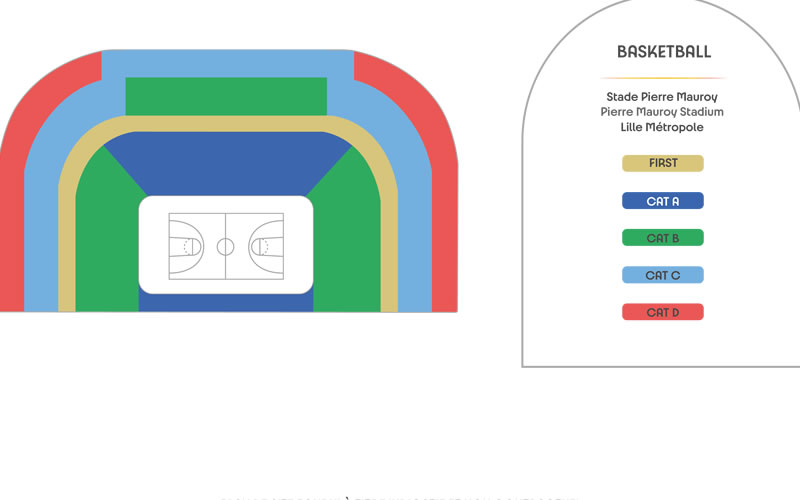BKB10 M - Group phase (2 matches): Winner OQT ESP - Winner OQT GRE, Canada - Australia - Summer Olympics - Paris Olympic 2024 Olympic Basketball Tickets

Pierre Mauroy Stadium - Basketball
Olympic Basketball
Olympic Basketball is one of the premier team sports in the Summer Games, showcasing elite talent, intense national rivalries, and world-class athleticism. Introduced to the Olympics in 1936 for men and in 1976 for women, basketball has grown into a global spectacle that brings together the best national teams from every continent.
The tournament features both men’s and women’s competitions, typically involving 12 teams each. Nations qualify through regional championships, world tournaments, and Olympic qualifiers. The format includes a group stage followed by knockout rounds, culminating in the gold medal match that often draws millions of viewers worldwide.
The United States has long been the dominant force in Olympic basketball, with its men’s team winning the majority of gold medals since 1936 and the women’s team establishing their own era of dominance since the 1990s. Legendary players like Michael Jordan, Magic Johnson, Larry Bird, Lisa Leslie, Diana Taurasi, and more recently, Kevin Durant and Breanna Stewart, have all contributed to Team USA’s Olympic legacy.
However, in recent decades, international teams have significantly raised the level of competition. Nations like Spain, Argentina, France, Serbia, and Australia have built strong basketball programs and challenged the traditional hierarchy, winning medals and delivering memorable upsets. The increasing global talent pool reflects the NBA and WNBA’s international influence, with many Olympic players also starring in professional leagues around the world.
Olympic basketball is known for its fast pace, high scoring, and physical intensity, along with passionate fan support. Games are often filled with dramatic moments, buzzer-beaters, and emotional victories. Unlike professional leagues, the Olympics bring a unique spirit of national pride, where NBA and international stars unite under their national flags in pursuit of Olympic glory.
Beyond the 5-on-5 format, basketball at the Olympics now includes 3x3 basketball, a half-court, fast-paced variation that debuted in Tokyo 2020. This addition has broadened the sport’s appeal and added a fresh, urban energy to the basketball program.
Olympic basketball continues to grow in popularity and competitiveness, reflecting the sport’s global reach. It remains one of the most exciting and prestigious events of the Summer Olympics, uniting fans and athletes through their shared love of the game and the pursuit of gold.
